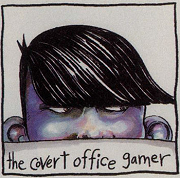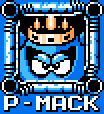|
Professor Shark posted:I just assumed they did it based on movies, I thought it was a way of making sure injured soldier didn't make their way back to the enemy Don't trust movies for facts.
|
|
|
|

|
| # ? May 10, 2024 21:12 |
|
Wounded definitely got killed on the battlefield on the regular but it was more a side effect of the absolute massive amount of looting that occurred by whichever side held the field after the battle ended.
|
|
|
|
Professor Shark posted:I just assumed they did it based on movies, I thought it was a way of making sure injured soldier didn't make their way back to the enemy In general, premodern battle was much more about making the enemy break and run than killing every single one of them. Wounded dudes were definitely killed sometimes, but there wasn't really a systematic way of doing so. Some wounded soldiers would be killed during the battle itself (this famously happened at Crecy), some would be killed as they fled during the rout, and others would be killed later on by the enemy or scavenging locals while the field was looted.
|
|
|
|
Professor Shark posted:I just assumed they did it based on movies, I thought it was a way of making sure injured soldier didn't make their way back to the enemy If you couldn't get off the field yourself, and weren't helped, you were probably going to bleed out anyway. I'd imagine that in a lot of cases, killing severely wounded opponents left on the field would probably be merciful.
|
|
|
|
But on the other hand, why even kill someone who can serve as a slave or be ransomed later. It all depends on circumstances.
|
|
|
|
Nenonen posted:But on the other hand, why even kill someone who can serve as a slave or be ransomed later. It all depends on circumstances. You can only ransom officers, and by my period, white slavery is not en vogue.
|
|
|
Jamwad Hilder posted:If you couldn't get off the field yourself, and weren't helped, you were probably going to bleed out anyway. I'd imagine that in a lot of cases, killing severely wounded opponents left on the field would probably be merciful. In these times, you were also at huge risk for infection because medical science really didn't exist. If you got left behind injured on a battlefield, good luck surviving even if you managed to limp back home.
|
|
|
|
|
Even if your wound healed, you'd essentially be at the mercy of your local religion because even the most basic elements of state supporting you didn't exist yet. You were double hosed if your injury cost you a limb too.
|
|
|
|
|
KYOON GRIFFEY JR posted:You can only ransom officers, and by my period, white slavery is not en vogue. Russians were still happy to take people, both soldiers and civilians, into slavery in the Great Northern War, but then they also had serfdom in place longer than most. Finnish civilian captives were taken as far as Kazan but mostly closer to build the new capital Sankt Peterburg during the occupation of 1700-1721, some eventually returning to their homes after the war. Though the use of POWs as an involuntary workforce never really ended and in WW2 reached some new heights, and enemy women have at all times been subjected to sexual abuse despite being officially frowned upon - I guess it depends on how you define slavery.
|
|
|
|
Jamwad Hilder posted:If you couldn't get off the field yourself, and weren't helped, you were probably going to bleed out anyway. I'd imagine that in a lot of cases, killing severely wounded opponents left on the field would probably be merciful. Also makes it easier to get their boots off.
|
|
|
|
bewbies posted:This is just anecdotal but I did quite a bit of taxi time with an air medevac unit and what those dudes did on a daily basis was pretty mind-boggling. they seem to push through it with a combination of gallows humor and energy drinks. Based upon this PubMed paper, Minie balls do more damage on average than the Krag–Jørgensen bolt action rifle (Norwegian equivalent to the Lee–Enfield). The minie ball and the rifle bullet have roughly equal energy, since the bullet moves faster, but the minie ball has a greater mass and caliber. But the rifle runs the risk of over-penetrating due to it's high speed and FMJ, compared to the slower and softer minie ball. It makes sense it works that way, since the logic behind hollowpoint rounds are similar.
|
|
|
|
Ainsley McTree posted:My gut reaction would be that they'd be more prone to it; just being in combat is bad enough, but to be the person who has to spend all their time around bleeding screaming soldiers with their guts hanging out (and sometimes watching them die even though it's your job to try and stop that) would have to do a number on your mental health. My gut feeling is it's like actual medics. I'm medical science, so not an paramedic by any stretch, but broadly the people who want to be paramedics (or even other gory stuff, like surgeons) are the people who want to do it. People who want to do it and can't tend to realise pretty quick. If there's self-selection in army medicine (and maybe there isn't; I'm even less in the army than I'm a paramedic) then I expect the people who do the goriest stuff are also the people with a temperment most predisposed to looking at bits of exploded person. I mean, I've been up to my eyeballs in chunks of dead person enough to be pretty blase about it and, absent of the risk of getting shot, I don't think I'd be more concerned to see organs that needed slicing up in the german plain or the middle east. Bits of dead guy are bits of dead guy.
|
|
|
|
I took a folklore class that examined storytelling among first-responders and it was fascinating. Every field has it's workers bonding over "war stories" about the crazy poo poo they've seen; it's a very simple interaction that everyone has to reinforce in-groups who share status. In the context of EMTs who deal with deeply terrible poo poo, it's also a way to share your trauma with other people who understand in a socially accepted way, a bit like therapy except it's contextualized as bragging so it doesn't seem weak, which is important in the world of police, EMTs, and firefighters. The guys who had stories about responding to plane crashes apparently tended to have the highest status because in those crashes they would see the worst traumas (evidently a lot of decapitations). It also went over how quickly folks working in cities where you deal with tons of traumatic violence have short careers because there are limits to coping with that in normal ways.
|
|
|
|
KYOON GRIFFEY JR posted:Wounded definitely got killed on the battlefield on the regular but it was more a side effect of the absolute massive amount of looting that occurred by whichever side held the field after the battle ended. chitoryu12 posted:In these times, you were also at huge risk for infection because medical science really didn't exist. If you got left behind injured on a battlefield, good luck surviving even if you managed to limp back home. What's that Pappenheim (?) anecdote where he wakes up after a battle with his skull cracked open, and his own guys are gonna kill him for his pants until they realize he's their commander? I don't know how much medical care contributed to his survival, but even if it was a crap shoot that he didnt get a deadly brain infection it was probably better than nothing.
|
|
|
|
Is accidentally killing your own CO considered a major faux pas or just one of those things that happens?
|
|
|
|
swamp waste posted:What's that Pappenheim (?) anecdote where he wakes up after a battle with his skull cracked open, and his own guys are gonna kill him for his pants until they realize he's their commander? I don't know how much medical care contributed to his survival, but even if it was a crap shoot that he didnt get a deadly brain infection it was probably better than nothing. i want to put in a word for how early modern medicine could sometimes not be poo poo, for instance they knew how to take bullets out of dudes and i have read a medical textbook that talks about cleaning wounds edit: and i'm not sure the fracture could have set if someone didn't strap his head back together, so HEY GUNS fucked around with this message at 01:15 on Jan 13, 2017 |
|
|
|
bewbies posted:also, You often see it said that musket or minie balls were far more destructive than modern high velocity rifle rounds. First, is this accurate, and if it isn't accurate, where did it come from? A brown bess musket fires a .69 caliber ball, it doesn't fire it super fast, but when it hits, it loving hits. Professor Shark posted:I just assumed they did it based on movies, I thought it was a way of making sure injured soldier didn't make their way back to the enemy If they do they're very unlikely to be in fighting condition and are very likely to get horrible infections which drain resources trying to keep them alive until they die. Wounded are generally either delayed dead or a drain on resources, you want your enemy to have wounded. It's also worth noting that the lethality of war has generally steadily increased over time, particularly the development of guns made people much more likely to fight to the death. I seem to recall an idea that the American civil war was abnormally high in casualties because the gun lines would just sit and shoot each other until they all died, rather than fixing bayonets and trying to stab the other lot like European armies did, because trying to do that generally made the enemy run away faster. Don't know how true it is though. True or not, classical and medieval battles would likely not have been as casualty-per-capita prone as modern ones, people would be much quicker and more able to withdraw a force before it suffered complete losses. Also the idea of having actual fronts and distributed armies is a new thing too, classical battles would have had big armies that had to be concentrated because you were reliant on runners and flags to actually command your army and you had a big gently caress off baggage train to cart around with you, so you're not mobile. So you would have big armies that only really killed each other when they both decided to do a stand up fight, rather than constant conflict across a front for years on end. OwlFancier fucked around with this message at 02:12 on Jan 13, 2017 |
|
|
|
OwlFancier posted:A brown bess musket fires a .69 caliber ball, it doesn't fire it super fast, but when it hits, it loving hits. Big balls, big holes.
|
|
|
|
OwlFancier posted:I seem to recall an idea that the American civil war was abnormally high in casualties because the gun lines would just sit and shoot each other until they all died, rather than fixing bayonets and trying to stab the other lot like European armies did, because trying to do that generally made the enemy run away faster. Don't know how true it is though. That's complete poo poo. It was high in casualties because it was an existential war and it went on for four years, and was the first war with rifled muskets as standard arms. There was plenty of close quarters combat with armes blanches during the ACW, but trying to close the range against a battalion of rifled muskets is a vastly different experience from trying to close the range against a battalion of smoothbores.
|
|
|
|
KYOON GRIFFEY JR posted:That's complete poo poo. It was high in casualties because it was an existential war and it went on for four years, and was the first war with rifled muskets as standard arms. There was plenty of close quarters combat with armes blanches during the ACW, but trying to close the range against a battalion of rifled muskets is a vastly different experience from trying to close the range against a battalion of smoothbores. I mean disproportinately high in casualites, not absolutely high. As in there was supposedly a tactical difference between the American armies and European armies at the time in terms of the latter favoring using bayonets to finish an engagement while the former preferring to shoot the enemy down. I think the story I read involved a British military observer being confused about it.
|
|
|
|
HEY GAL posted:pappenheim after white mountain. it's why his forehead looks the way it does in the paintings *googles pappenheim* Oh god it's a star trek alien Also, I feel like the 30yw would be amazing fodder for a dynasty warriors-type game and I just made myself sad that that game doesn't exist.
|
|
|
|
The primary reason battlefield casualties in the American Civil War were so high is that they were using late 19th century weapons with late 18th century tactics. Pickett's charge at Gettysburg is a pretty solid example - not only would Napoleon have done much the same thing in 1798, it would have worked because the defenders would get one, maybe two shots from their muskets, and the artillery would probably get four inaccurate shots at most before local superiority in mass overwhelmed the lines. Instead, artillery tore them to bits at long range, then they were butchered by rapid rifle musket fire, and finally massacred by cannon double-shotted with cannister. The 15,000 man force took almost 7,000 casualties and failed to take the hill.
|
|
|
|
|
KYOON GRIFFEY JR posted:That's complete poo poo. It was high in casualties because it was an existential war and it went on for four years, and was the first war with rifled muskets as standard arms. There was plenty of close quarters combat with armes blanches during the ACW, but trying to close the range against a battalion of rifled muskets is a vastly different experience from trying to close the range against a battalion of smoothbores. OwlFancier posted:I mean disproportinately high in casualites, not absolutely high. As in there was supposedly a tactical difference between the American armies and European armies at the time in terms of the latter favoring using bayonets to finish an engagement while the former preferring to shoot the enemy down. I think the story I read involved a British military observer being confused about it. What he means is that major battles in the Franco-Prussian war and the Eastern front of the American Civil war had about the same number of casualties. But in the ACW, the side with 100,000 troops in the battle had a major numerical advantage. In the Franco-Prussian war, the side 100,000 troops in the battle had a major numerical disadvantage. So, the ACW had a higher percentage of casualties in the big battles.
|
|
|
|
OwlFancier posted:If they do they're very unlikely to be in fighting condition and are very likely to get horrible infections which drain resources trying to keep them alive until they die. I don't want to sound like a jerk but I'd like to see some sources on any of this because I'm spotting some pretty off-the-cuff responses that look a little shady. First off, the wanting your enemy to have wounded rather than dead. This just sounds like that old Vietnam anecdote about 'wounding' bullets rather than 'killing' bullets and I've seen that torn to shreds in this thread before. Not only that, but in previous eras that's not even really an issue since you solve it by simply not giving resources to your wounded in the first place. If the generals say march those who can't keep up get left behind. Furthermore, the culture, ideology, and a host of other factors have changed as well. There are ancient and medieval battles that ended in widespread slaughter and there are ones that were resolved with a minimum of bloodshed and some prisoners taken. It's not really fair to compare an industrialized nation-state engaging in an existential war to a tribal conflict about seizing hostages and horses in terms of casualties because the two are so different from each in fundamental ways. As a way of comparison, the Second Punic War had numerous bloodbath battles and Hannibal marching a very mobile and often dispersed army through all of Italy while being trailed by an army engaging in harassment attacks for years on end.
|
|
|
|
There's a difference between your enemy dealing with wounded being useful and actually centering your strategy around it which is very rarely practical. Trying to design a wounding only bullet is silly but if you have enemy wounded on the field after a battle then sending a dude specifically to go round and stab them all is... kind of a weird idea. It doesn't really give you an advantage. Unless you have some kind of cultural affinity for stabbing people. Sure your enemy can elect not to deal with their wounded, in which case they die anyway, and it probably doesn't do the enemy morale any good, in either case having a regimental casualty-stabber is probably not a thing you're going to bother with. As to lethality, before guns you generally have to get right up in your enemy's face to kill them, and your ability to do that is dictated by a lot of factors, as is their ability to resist. The all or nothing element of gun-oriented combat is a significant change because you can be entirely fine one second and dead the next, and you're basically just having to fight under that threat all the time. Essentially, you don't see your death coming as often, whereas you probably do when it's a hundred big blokes with spears in a big block. It gives you more chance, and inclination, to run away and also more inclination to run away with all the other blokes in your own block compared to the much more distributed nature of modern battles. You're not under constant threat of just being shot dead by something you don't see coming (javelins and arrows excepted). You have a bit more of a sense of what threats are and where they're coming from. And yes, Hannibal led a big army through Italy for years on end without committing to battles constantly. That's very different from modern front-oriented warfare. I would posit that it would be in no way practical to have, say, the entire US army tromp around on its own through Russia for years being shadowed by a massive Russian army, without being obliterated by attrition (ignoring obvious environmental factors, even.) That's a major change as well. And yes motivations have changed too, as army compositions have changed, having professional armies has a major effect on how you can fight, whereas if you have to levy troops from your civilian population in wartime that obviously puts some really hefty economic limitations on how you can conduct a war. There's always situational variations but in the pre-gunpowder era it was just a lot harder to really go out and murder a whole loving bunch of guys. People still did it sometimes, but I think the gunpowder era really cemented it as commonplace. OwlFancier fucked around with this message at 04:25 on Jan 13, 2017 |
|
|
|
So I was reading a reddit post about the Toyota War, and I have no idea if any of this wild and metal poo poo can be corroborated.quote:If Habré did anything well during his reign, that was to accept people from all possible (Chadian) tribes, regardless of their religion, ideology etc. He was especially happy to include/accept dissidents from various parties that used to collaborate with Libyans and/or the GUNT. Then he picked a bunch of youngsters and sent them for training abroad (primarily to France). When these came back, in 1986, they developed that 'razzou' (meanwhile better known as 'infiltration') tactics, the essence of which was 'old/traditional-style mounted raid' - but with support from AML-90s, ATGMs, and RPGs, and mounted on Toyotas, of course (I'm really trying to keep this 'short', so sorry if I omit anything). The poster is a author named Tom Cooper, who's written a bunch of books about African/Middle Eastern air warfare that are listed in amazon. Anybody here have an opinion?
|
|
|
|
spectralent posted:The fact that comic books, nursery rhymes and sausages were used to explain warfare in WW2 never ceases to amaze. Comic books are still a thing. (That throws an "unsecure" error in my browser, but it's the Army, so probably safe.) VanSandman posted:I think the only real military solution to a modern city is to cut off access to power, water, and food, and wait until everyone inside is dead or unwilling to fight you.  Main Street of what was once Bezonvaux, France, one of the towns scoured from the face of the earth during the battle of Verdun. It's kind of amusing that Hiroshima and Nagasaki were rebuilt into thriving metropolises fairly quickly, while the bomb squad being called in for WW2 bombs is so common it barely makes the news in Germany, and some parts of France are basically fenced-off nature preserves (see above) because there's so many dud artillery shells in the ground. I guess the whole "nukes will make the target uninhabitable for hundreds of years" thing is a bit overblown -- though I guess modern nukes are probably much more efficient, and so produce a lot more of the nasty short-lived decay products, but still. JcDent posted:I actually wanted to know - something that would have been helpful had I stated it - if there were large Cold War mercenary involvement in conflicts outside of Africa. The American "advisors" in Vietnam were arguably mercs in all but name -- technically they were employed by the US government, but wouldn't admit to it (it'd be pretty obvious if they were captured, but they wore local clothes with no insignia of any kind, which is in itself a minor war crime and/or makes it not a war crime to summarily execute them), and all the ones I know did it for the longer stateside training time (so less time Over There), and also the bonus pay for jumping out of airplanes (my pa got $5 for every jump at Bragg, which was a decent amount of money in 1969). Gnoman posted:Instead, artillery tore them to bits at long range, then they were butchered by rapid rifle musket fire, and finally massacred by cannon double-shotted with cannister. Speaking of canister, there's a canister round for the 120mm gun on the Abrams.  Some things never change. The solid shot is now an 18-pound tungsten/DU lawn dart truckin' along at a mile a second, but canister is pretty much the same as it's always been: a coffee can full of musket balls. (The standard small coffee can I have on hand is only 100mm diameter, but does 20mm really matter at that point?) Edit: if an M1 is firing the canister round, both the tank crew and the enemy force being shredded by it have made poor life decisions. Or the tankers are just saving their HEAT rounds and using God's own shotgun to knock down fragile buildings. Chillbro Baggins fucked around with this message at 06:16 on Jan 13, 2017 |
|
|
|
Delivery McGee posted:Can arty still be double-shotted, or will the shell nearest the powder just wedge into the other and/or be too much of a blockage and blow up the gun?
|
|
|
|
HEY GAIL posted:it's not the safest, but you can definitely doubleshot canister You are not the person I expected to reply. Yeah, double (or triple) canister was a thing from your time up until ships were made of iron, but is it still?
|
|
|
|
So that's where the can-can came from. Ol' Napoleon doubling up on canister and dragging France into empire.
|
|
|
|
Delivery McGee posted:You are not the person I expected to reply. Yeah, double (or triple) canister was a thing from your time up until ships were made of iron, but is it still?
|
|
|
|
HEY GAIL posted:i do not give a gently caress about modern combat! Early modern though
|
|
|
|
FAUXTON posted:Early modern though it says so in the name
|
|
|
|
HEY GAIL posted:that's not modern, it's earlier It's modern, just the early part of modern. Says so in the name
|
|
|
|
FAUXTON posted:It's modern, just the early part of modern. Really it should be divvied up into "direct fire" and "indirect fire" arty, because that's kind of a big thing, sort of like how it went from pikes to muskets as the main infantry weapon. Once you can shoot over the horizon, poo poo gets real.
|
|
|
|
Delivery McGee posted:I guess the whole "nukes will make the target uninhabitable for hundreds of years" thing is a bit overblown -- though I guess modern nukes are probably much more efficient, and so produce a lot more of the nasty short-lived decay products, but still. It's certainly overblown. Full blown nuclear war with modern stockpiles would render the surface of much of the northern hemisphere uninhabitable for a few months, perhaps a year or two, but by then the short term fission products would have decayed, and the radiation would subside to a harmful but survivable level. Southern hemisphere might make out OK if only because not too many bombs would likely be targeted there, and wind patterns would limit the spread of the fallout from the north. Between the nuclear exchange, societal collapse, and climate effects, it would still kill nearly every human on the planet though. That's not to say you can't build bombs that would render the earth uninhabitable for a long rear end time though. That's what salted bombs are for. PittTheElder fucked around with this message at 06:52 on Jan 13, 2017 |
|
|
|
golden bubble posted:Based upon this PubMed paper, Minie balls do more damage on average than the Krag–Jørgensen bolt action rifle (Norwegian equivalent to the Lee–Enfield). The minie ball and the rifle bullet have roughly equal energy, since the bullet moves faster, but the minie ball has a greater mass and caliber. But the rifle runs the risk of over-penetrating due to it's high speed and FMJ, compared to the slower and softer minie ball. It makes sense it works that way, since the logic behind hollowpoint rounds are similar. I don't have much doubt that a rifled musket would cause much more damage at 3m, but the more I think about it, the more I'm skeptical that it would reliably do so at combat ranges. You'd be a lot less likely to produce a significant exit wound with a musket, and any advantage gained in wounding via the diameter of the musket round would, I think, be largely offset by the rifle round either tumbling or fragmenting. Plus, a modern bullet is going to be a lot more energy efficient; presumably it'll impact with a lot more energy downrange. I dunno, it just seems...very counterintuitive to me, one of those things everybody "knows" but that the physics doesn't seem to support. I'd like to get more info from gun enthusiasts though.
|
|
|
|
moreover, while a period bullet starts out fast(ish), it loses velocity far more rapidly than its modern counterpart. i don't know much about medicine--what kind of wound will a fat, heavy, soft, slow missile make, as opposed to one that's smaller but much faster? i mean, i had always heard that minne balls leave larger holes as well, but once you get to modern velocities won't the shockwave tear holes through flesh?
HEY GUNS fucked around with this message at 06:56 on Jan 13, 2017 |
|
|
|
Remember that we're talking about the wounded here, ie the survivors. If a rifle round guess straight through you and takes out a vital organ you need no medical treatment.
|
|
|
|

|
| # ? May 10, 2024 21:12 |
|
HEY GAIL posted:moreover, while a period bullet starts out fast(ish), it loses velocity far more rapidly than its modern counterpart. i don't know much about medicine--what kind of wound will a fat, heavy, soft, slow missile make, as opposed to one that's smaller but much faster? i mean, i had always heard that minne balls leave larger holes as well, but once you get to modern velocities won't the shockwave tear holes through flesh? There's a lot of factors, like a soft, slow, heavy projectile might not cause the cavitation that a modern rifle round can, the fact that it's a tumbling lump of lead means that every Joule of energy carried by that lead ball gets dumped into your body instead of staying with the modern pointed, spin-stabilized, aerodynamic rifle round as it passes through. The fact that it's tumbling might also increase the chance that it fragments and would certainly raise the likelihood that it takes off in a different direction once it hits you. Like you might have an entry wound between your lower ribs but the drat thing took off when it hit your chest wall and went through your liver and a lot of intestine before lodging in your colon. It's probably a wash because you're just looking at two different kinds of shock.
|
|
|


























 Bad Angus! Bad!
Bad Angus! Bad!



 Yes, it's like a lava lamp.
Yes, it's like a lava lamp.
